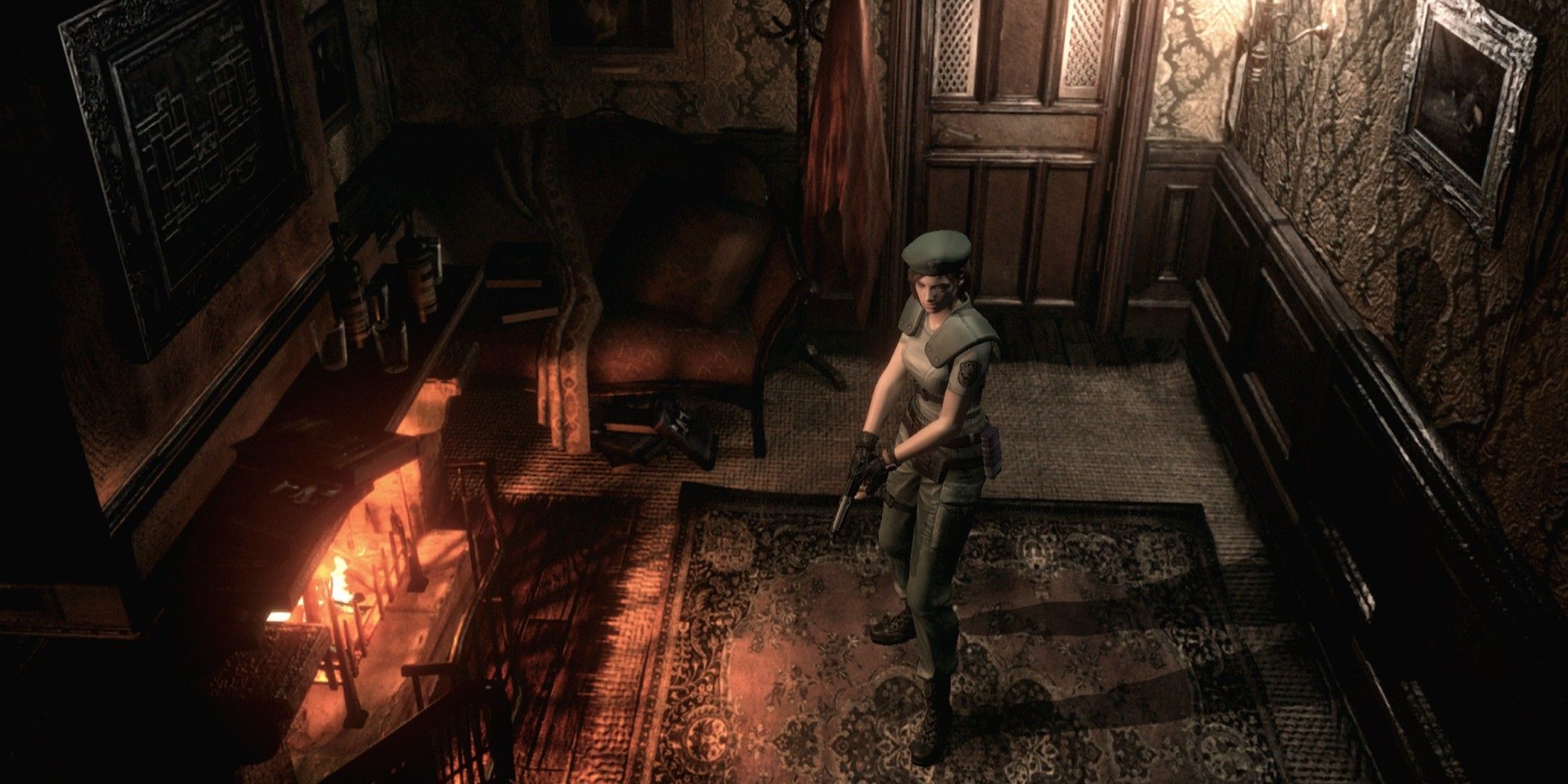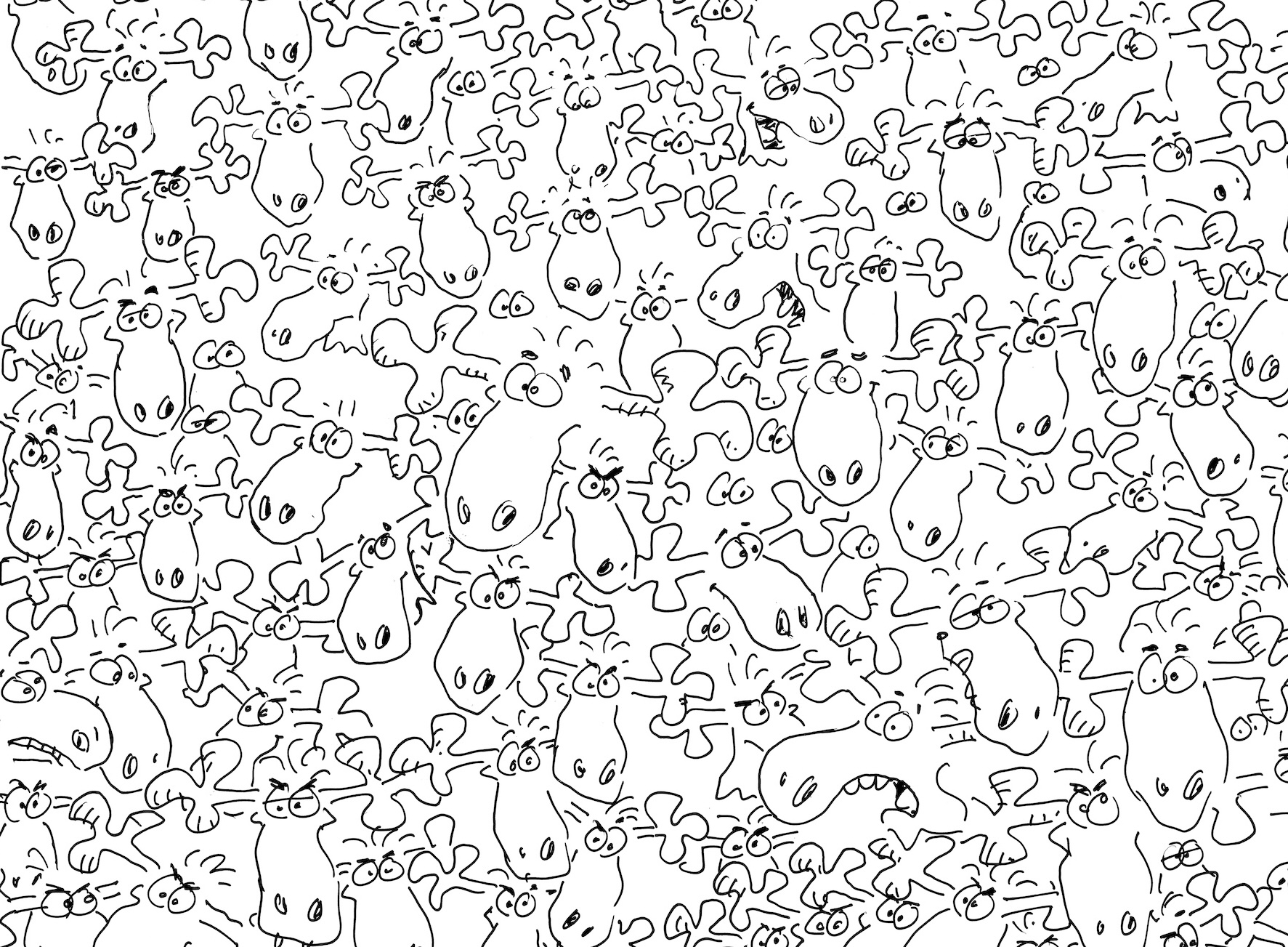Resident Evil, alternatively known as Biohazard in Japan, is probably the most important horror franchise in gaming. The first game, coming out in 1996 for the original PlayStation, was a bestseller, inspired thousands of copycats, basically created the entire subgenre of ‘survival horror’ and immediately made a mark on popular culture. It spawned a movie series that lasted for over fifteen years, including several reboots , novelizations and arcade machines. We’ve since had over a dozen spin-off games, seven more mainline titles, and four remakes, mostly developed by studio Capcom. The first of these was 2002’s Resident Evil, created in collaboration with Nintendo for the then-new Gamecube console. Even though it came out over 20 years ago, Resident Evil still has a dedicated fanbase today, who will die on the hill of praising it as the best game in the series. How does this game still hold up, even after all this time?
Now, you may be wondering, why remake a game only 6 years after it came out? The answer lies in Shinji Mikami, who directed both the original Resident Evil and it’s 2002 remake. The original game was produced on a small budget, and had to compete with the technical limitations of the original Playstation. By 2000, he felt as if the original game had not aged well at all, believing that the Gamecube’s technical capabilities could help bring the game closer to his original vision. Producer Hiroyuki Kobayashi agreed, and production was underway, with the help of Nintendo. The result was a fourteen month production, in which Mikami utilized the same basic technique as the original game, superimposing 3d character models over pre-rendered backgrounds, in this case, painted images literally done over the backgrounds of the original game. According to marketing director Todd Thorson, the goal was:
To achieve motion picture-quality visuals and create even more suspense and fear than the original.
Production began with only four programmers. Due to being the first game Capcom developed for the GameCube, the team also had to monitor the systems performance. Despite maintaining the pre-rendered backgrounds style of the original game, the camera is more flexible and can track the player at more angles than the original game. CG Artwork Unit director Naoki Katakai designed the backgrounds to utilize particle effects and full motion video layers to simulate effects such as trees moving or water rushing, and designed areas with light / dark contrast in mind to further the fear factor. In addition to visual changes, gameplay received substantial changes as well, operating from an entirely new story script with added lines of dialogue and entirely new sequences. Changes include an expanded inventory, more difficult enemies (which we will come back to later), changed puzzle designs and a more robust difficulty system, based around answering a quiz at the start of the game.
 Game director Shinji Mikami in 2000.
Game director Shinji Mikami in 2000.Capcom auditioned actors to be used as visual references for the character design team. Motion capture was used to animate the models, all based on the real faces of real people. Nintendo helped support this process, which Capcom initially struggled with as they lacked a system for computer graphic animation. They additionally hired new voice actors with more professional experience to avoid repeating the original game’s critical mistake. The result is that these are the most well realized characters visually in the series up to that point, and the models have aged phenomenally well into the modern day, still striking up the perfect balance between realistic and stylized, no doubt due to only 60% of any given face being photorealistic, the rest having to be animated by Capcom’s development team. The character designs of this game are also incredible, maintaining the visual identity of character’s designs in the original but making them more realistic.
 An in-game screenshot from Resident Evil (2002)
An in-game screenshot from Resident Evil (2002)The premise of the remake is, understandably, identical to the original. After a series of bizarre murders just outside Raccoon City, polite department S.T.A.R.S (Special Tactics and Rescue Service) are sent to investigate. After the Bravo Team is found mostly dead in a crashed helicopter, the Alpha Team takes refuge in the seemingly abandoned Spencer Mansion, where horrors lurk in the dark for our survivors. Over the course of one horrible, long night, protagonists Chris Redfield and Jill Valentine will have to face terrible monsters, the dark secrets of the Spencer Mansion, and the machinations of the Umbrella Corporation, who are the key that link back to everything. The story of this game isn’t exactly revolutionary, but set the basis for the franchise to come and tackles its themes in more seriousness than the somewhat campy original game. These aren’t exactly narratively rich games, but the story gets the job done, and has a certain timeless quality.
The characters of this game are a total standout. Almost every major character has become an iconic part of the franchise or pop culture. Chris Redfield, bonafide badass leading man, has gone on to become the most prevalent Resident Evil character, appearing in 5, 7 and 8 as a key character. Jill Valentine is also one of the most famous and beloved characters in the series, and is probably my personal favorite character in the franchise. Wesker is, of course, the series most legendary antagonist, and has a rabid fanbase who I will mention but not elaborate on. Even smaller characters like Barry and Rebecca have their fans, and have reappeared as leads in spin-off games (Resident Evil Revelations 2 and Resident Evil 0 respectively.) The character writing in the remake is particularly good, as you get to connect to all of these characters and understand them well in a shrot timeframe, and you get to see how they change as their world in S.T.A.R.S comes crashing down swiftly.
 Cutscene screenshot from Resident Evil (2002)
Cutscene screenshot from Resident Evil (2002)This game is set in the perfectly gothic Spencer Mansion, and figuring out the secrets and mysteries of the mansion is a core element of the game. Notes are left hidden for you to find, telling haunting stories ranging from grotesque to terrifying. One such story is the infamous subplot of Lisa Trevor, a little girl experimented on for years until she became a nightmarish monster of faces you meet midway through the game. It’s an incredible sad story all told through documents and notes, and the game rewards you for investing your time into it, similarly to later games such as the Bioshock series. The mansion has left a mark in the minds of players, still getting analyzed and dissected to this day, and stands as one of the great horror game settings.
The gameplay loop of the original involves solving puzzles, avoiding or killing enemies, and unlocking further areas in the Spencer mansion. It features classic tank controls and fixed, third person camera angles. You get a variety of unlockable weapons over the course of the game, some of which are missable, and you find various items to help you survive, including healing items and ingredients for bullets. Somewhat unique to this game in terms of the larger franchise is that Jill and Chris play very differently. Chris can take more damage and deal out more, but Jill can carry more items and has a lockpick to unlock certain doors. Each is supported by a different S.T.A.R.S member, with Jill supported by Barry Burton, while Chris is supposed by Rebecca Chambers. Individual puzzles and moments between the two are different as well, which makes it more than worth it to play both.
This is one scary game. There is something to be said about the difficulty adding directly to the fear – the lack of control of movement and the camera make you feel powerless even when you’re armed to the teeth. You have little to no idea about what could be around the corner, waiting to kill you. A perfect example of this is the Crimsonheads. It becomes clear early on that the easiest way to dispatch a zombie is to shot off its limbs, or pop it in the gut till it keels over. After a certain point in the game, every zombie you did not decapitate or burn comes back as an ultra-aggressive Crimsonhead, which can run and seriously ruin your perfect composure. It’s a terrifying element of the game, and when I was playing it for the first time, I learnt the hard way I should always aim for the head.
Upon release, Resident Evil received widespread acclaim from critics. Many praised its atmospheric intensity, beautifully animated cutscenes and incredibly well realized environments. Critics were divided on the tank controls and fixed camera angles, with some praising keeping the system in tact while others were more critical. This seems to still be the thoughts towards the game today – even with Resident Evil as a franchise back at the forefront of horror gaming, not many newer fans of the series have played through Resident Evil, perhaps out of dislike for the controls. What is a loss to some is a gain to others, and I think it works perfectly in sync with the game’s design. I cannot imagine a world where this game doesn’t have tank controls, and is still as scary, thrilling and tense. They restrict your control for a reason – to make you feel powerless, and prevent you from just mowing down enemies how you wish. A remaster of the game arrived on modern consoles in 2015, updating some of the controls to make them more intuitive, and visually changing very little other than porting the game to HD. It looks and plays great, and will always be the version of the game I recommend to modern players.
Capcom has since released modern console remakes of Resident Evil 2, 3 and 4, with high fidelity graphics and over-the-shoulder, 3rd person shooter gameplay. All three, especially 2019’s Resident Evil 2, are great video games and well worth playing. They update the games well for modern standards and expectations, and have been record-breaking sales successes for the franchise, bringing in an entirely new generation to the fanbase. There have been consistent rumors for years about them redoing the original game in the same style as their modern titles, as well as a potential remake of Resident Evil: Code Veronica (something I would personally be over the moon in support for). Regardless of whether one day we get another remake of the original game, I still think Resident Evil (2002) is pretty much the perfect experience in classic survival horror. It takes the game that invented the genre and crafts it into the best version it can be, with a true emphasis on artistry at all points, trying to make the scariest and most thrilling version of itself it could possibly be. It is a concentrated experience where every single element and mechanic of the game is all working towards one shared goal and one vision. I might be biased, as it is no doubt my favorite horror game of all time, but I also think a modern remake might potentially lose some of the unique artistic edge of 2002’s masterwork. However, ultimately, I will always have the 2002 game available to me, and that in and of itself is remarkable, just like the game itself. That’s probably why it holds up so well to so many – it’s just a totally striking, once in a generation artistic achievement.
 Concept art for Jill Valentine’s updated character model
Concept art for Jill Valentine’s updated character model




















 English (US) ·
English (US) ·